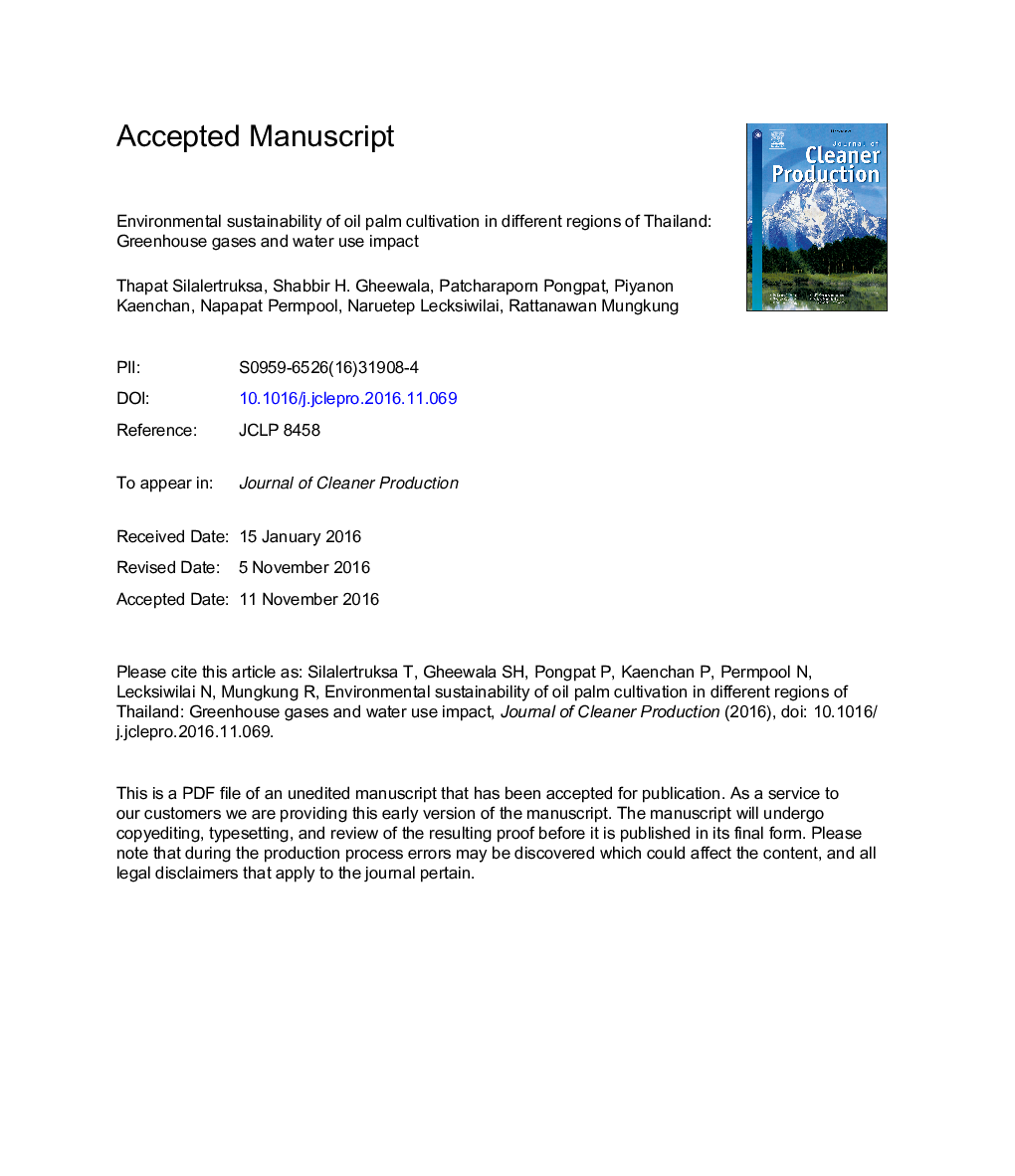| Article ID | Journal | Published Year | Pages | File Type |
|---|---|---|---|---|
| 5479511 | Journal of Cleaner Production | 2017 | 26 Pages |
Abstract
The increased demand in Thailand for palm oil for food, cosmetics and especially biodiesel has resulted in the rapid expansion of oil palm cultivation nationwide. This has raised concerns on the environmental sustainability of oil palm cultivation especially in the regions where land and climate are less suitable for oil palm. The study assesses the life-cycle greenhouse gas (GHG) emissions, water use and water scarcity footprint of oil palm cultivation in the different regions of Thailand. There is a wide variation of GHG emissions and irrigation water required ranging between 64 and 225Â kg CO2eq/t FFB and 550-1749Â m3/t FFB, respectively. Oil palm cultivation in the South brings about the lowest water scarcity footprint i.e. around 2-13 m3H2Oeq/t FFB followed by the East, North, Central and Northeast, respectively. Promotion of oil palm cultivation must thus be based on land and climate suitability considerations along with good practices for productivity improvement. Recommendations have been discussed for enhancing sustainable oil palm cultivation which in turn will improve the competitiveness of the Thai palm oil industry.
Related Topics
Physical Sciences and Engineering
Energy
Renewable Energy, Sustainability and the Environment
Authors
Thapat Silalertruksa, Shabbir H. Gheewala, Patcharaporn Pongpat, Piyanon Kaenchan, Napapat Permpool, Naruetep Lecksiwilai, Rattanawan Mungkung,
